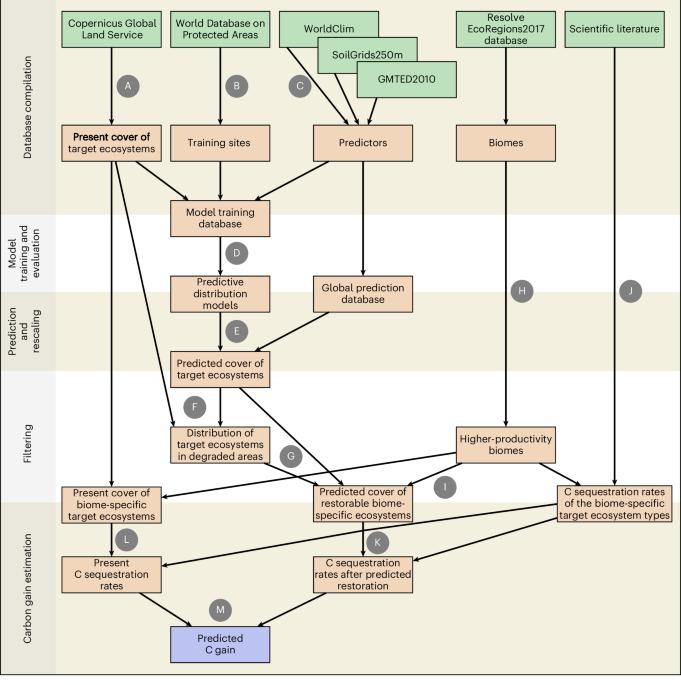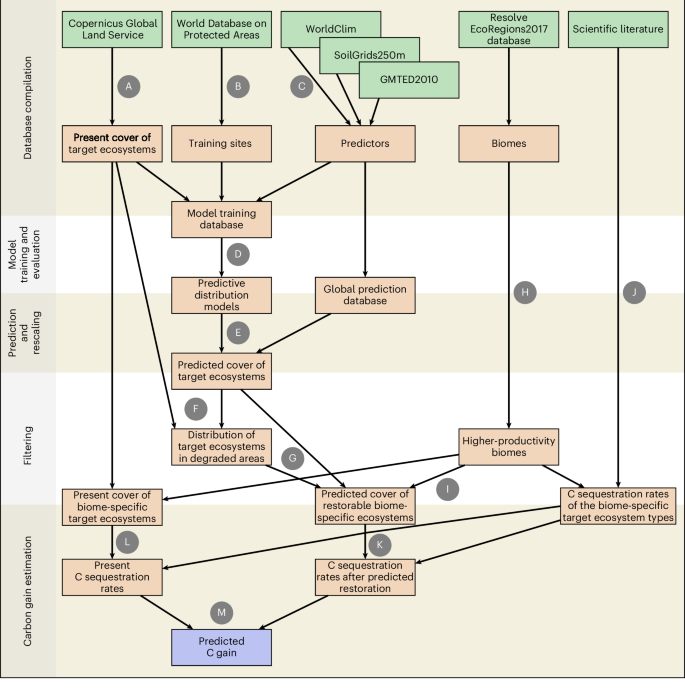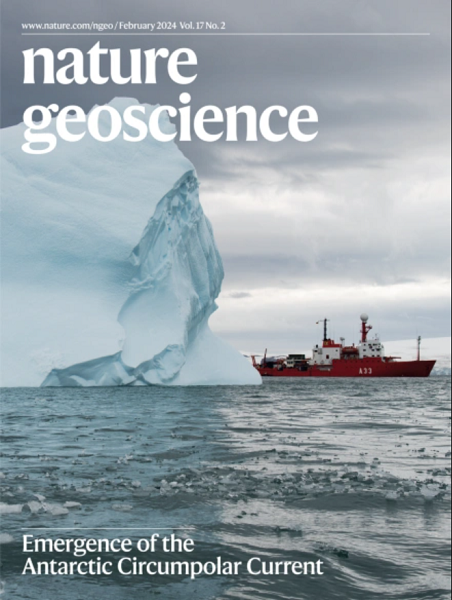Limited carbon sequestration potential from global ecosystem restoration
IF 16.1
1区 地球科学
Q1 GEOSCIENCES, MULTIDISCIPLINARY
引用次数: 0
Abstract
Ecosystem restoration is increasingly recognized as a means of climate change mitigation. Recent global-scale studies have suggested that ecosystem restoration could offset a substantial fraction of human carbon emissions since the Industrial Revolution. However, global carbon sequestration potential remains uncertain due to the tree-centric view of some models and difficulties in modelling restoration across different ecosystem types. Here we applied a model-based prediction workflow to estimate the carbon capture potential of restoring forest, shrubland, grassland and wetland ecosystems until 2100. We found that the maximum sequestration potential is 96.9 Gt of carbon, equivalent to 17.6% of the anthropogenic emissions to date, or 3.7–12.0% if taking into account future emissions until 2100. Our results suggest that ecosystem restoration has limited potential for climate change mitigation even if orchestrated with a pervasive shift towards sustainable, low-emissions economies globally. In addition, if we plan restoration targets to match future climatic conditions and consider state transitions of currently natural ecosystems due to climate change, the potential for natural climate solutions related to ecosystem restoration is close to zero. Therefore, we recommend that ecosystem restoration is pursued primarily for restoring biodiversity, supporting livelihoods and resilience of ecosystem services, as the climate mitigation potential will vary depending on the state transitions that occur between vegetation types. The maximum carbon sequestration potential from global terrestrial ecosystem restoration efforts until 2100 is 96.9 Gt, which is equivalent to 3.7–12.0% of anthropogenic emissions until then, according to model projections.


全球生态系统恢复的碳封存潜力有限
生态系统恢复日益被认为是减缓气候变化的一种手段。最近全球范围的研究表明,生态系统恢复可以抵消自工业革命以来人类碳排放的很大一部分。然而,由于一些模型以树木为中心的观点,以及在模拟不同生态系统类型的恢复方面存在困难,全球碳固存潜力仍然不确定。本文采用基于模型的预测流程,对2100年前森林、灌丛、草地和湿地生态系统的碳捕获潜力进行了估算。我们发现,最大封存潜力为969亿吨碳,相当于迄今为止人为排放量的17.6%,如果考虑到2100年之前的未来排放量,则相当于3.7-12.0%。我们的研究结果表明,即使与全球向可持续、低排放经济的普遍转变相协调,生态系统恢复对减缓气候变化的潜力也有限。此外,如果我们计划的恢复目标与未来的气候条件相匹配,并考虑当前自然生态系统因气候变化而发生的状态转变,那么与生态系统恢复相关的自然气候解决方案的潜力接近于零。因此,我们建议进行生态系统恢复主要是为了恢复生物多样性、支持生计和生态系统服务的复原力,因为气候缓解潜力将因植被类型之间的状态转变而异。
本文章由计算机程序翻译,如有差异,请以英文原文为准。
求助全文
约1分钟内获得全文
求助全文
来源期刊

Nature Geoscience
地学-地球科学综合
CiteScore
26.70
自引率
1.60%
发文量
187
审稿时长
3.3 months
期刊介绍:
Nature Geoscience is a monthly interdisciplinary journal that gathers top-tier research spanning Earth Sciences and related fields.
The journal covers all geoscience disciplines, including fieldwork, modeling, and theoretical studies.
Topics include atmospheric science, biogeochemistry, climate science, geobiology, geochemistry, geoinformatics, remote sensing, geology, geomagnetism, paleomagnetism, geomorphology, geophysics, glaciology, hydrology, limnology, mineralogy, oceanography, paleontology, paleoclimatology, paleoceanography, petrology, planetary science, seismology, space physics, tectonics, and volcanology.
Nature Geoscience upholds its commitment to publishing significant, high-quality Earth Sciences research through fair, rapid, and rigorous peer review, overseen by a team of full-time professional editors.
 求助内容:
求助内容: 应助结果提醒方式:
应助结果提醒方式:


